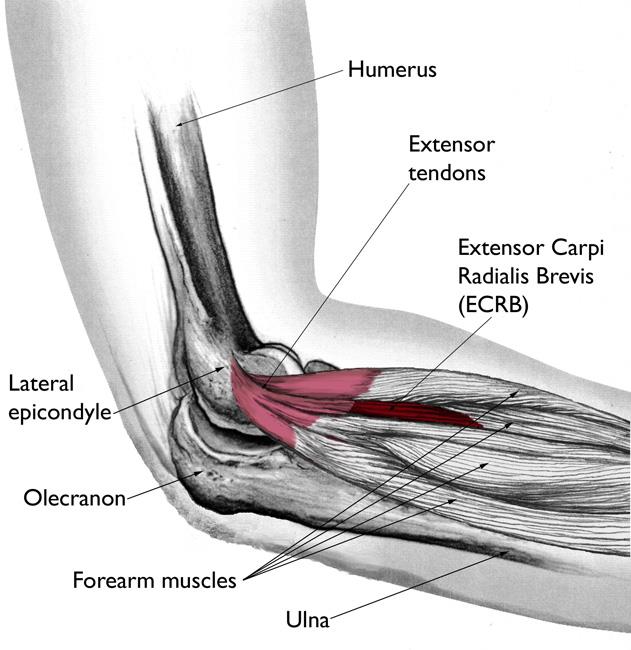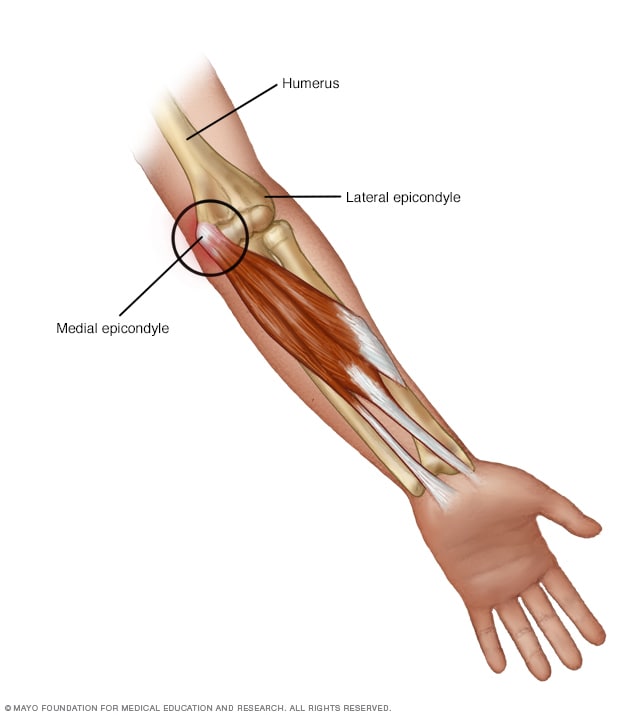Elbow pain: why it happens and how we fix it!
Apr 8, 2020
by Karina Wait
How and why does elbow pain occur?
Elbow epicondylitis is identified in two ways, lateral epicondylitis (tennis elbow) and medial epicondylitis (golfer's elbow). Lateral epicondylitis is when inflammation occurs in the extensor tendons on the outside of the forearm. More specifically, the tennis elbow is due to damage of the Extensor Carpi Radialis Brevis (ECRB) (OrthoInfo, 2015). Pain can be due to 1. pulling too early in the snatch or clean, 2. relying on the elbows to control a rapid descent from a pull-up, muscle-up, or lowering a barbell from the shoulders rather than utilizing your shoulder complex, and 3. doing too much too soon. (cfglory, 2016).

Medial epicondylitis (golfer's elbow) is when inflammation develops in the muscles that flex the wrist (think inside of forearm). With golfer's elbow, along with tenderness in the medial elbow, pain can even be felt in the wrist. Movements that can cause this injury is any exercise that utilizes your grip (any barbell, db, rig movements) (Sportsinjuryclinic, 2019).

Fixing elbow pain can be a lengthy process. But with patience, relief is possible. To get on the road to recovery, here are some steps to take.
- Rest. The elbow is supported by tendons that don't receive the same amount of blood flow as muscles and thus, take more time to heal. So, resting the injured area and stopping movements that aggravate the area for at least 2 weeks is important. Putting heat on the area is another variable to do.
- Focusing on static movement. This incorporates overhead carries, hanging from the pull-up bar, and waiters/farmers walk. Start easy and increase intensity/volume over time.
- Take time to stretch and warm-up the area prior to working out. With daily activity, our forearms fatigue easily. Massaging the area and utilizing flossing will also help (hint hint- a lacrosse ball). Examples of stretching include wrist flexion and extension stretches, holding the stretch for at least 2 minutes. Give your elbows some TLC and they will thank you.
- Strengthening the forearm and wrist. Check out this infographic from OrthoInfo https://orthoinfo.aaos.org/globalassets/pdfs/a00790_therapeutic-exercise-program-for-epicondylitis_final.pdf
References
Coach Karina- CF L1, USAW Sports Performance Coach, BS-Kinesiology
